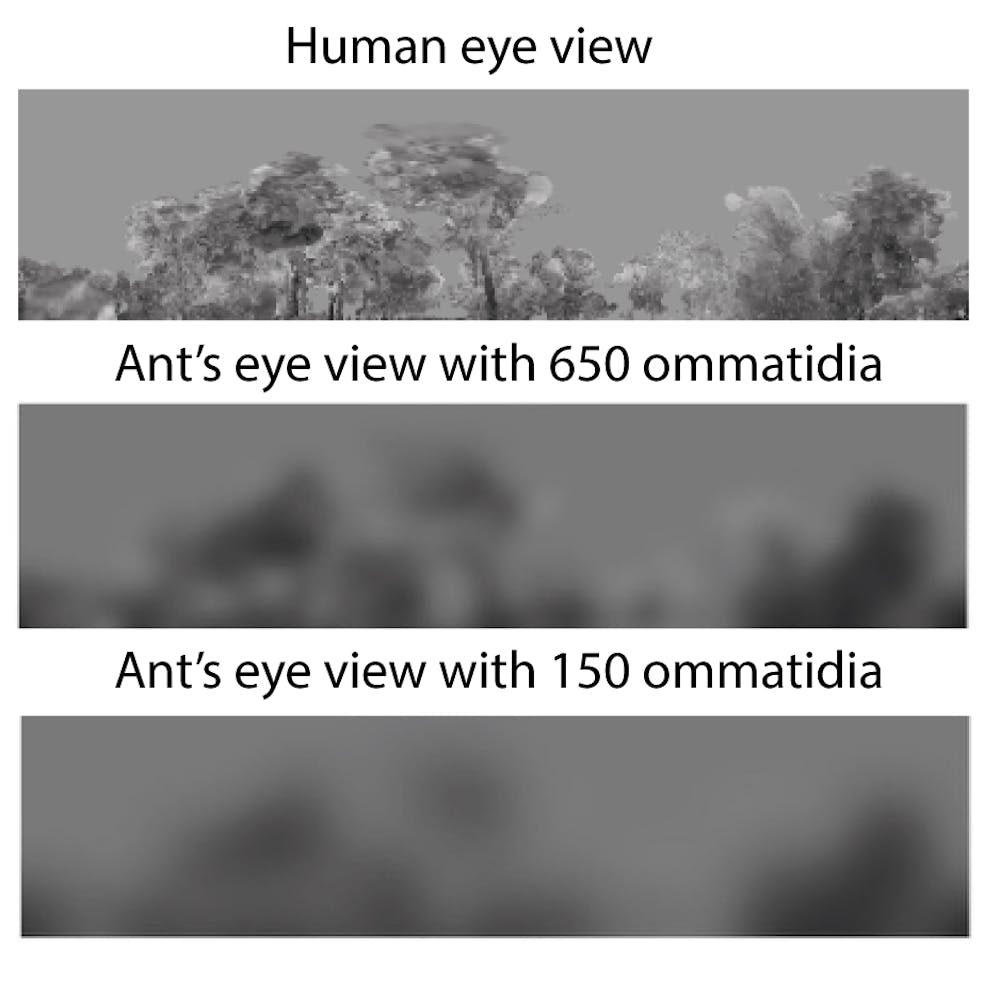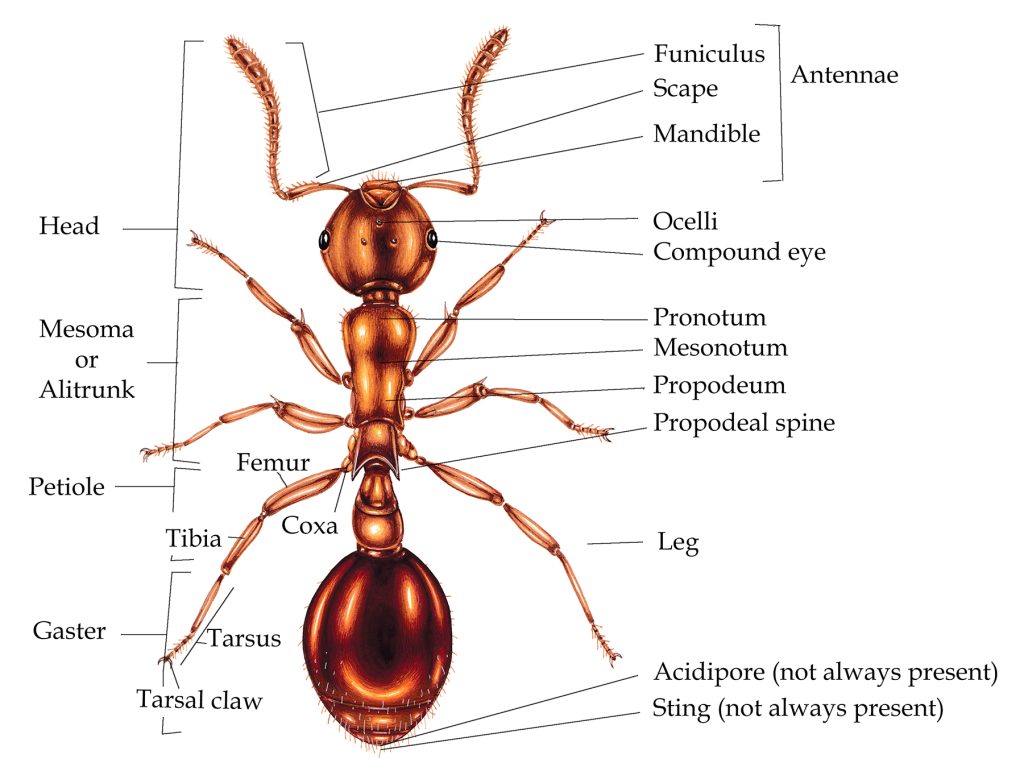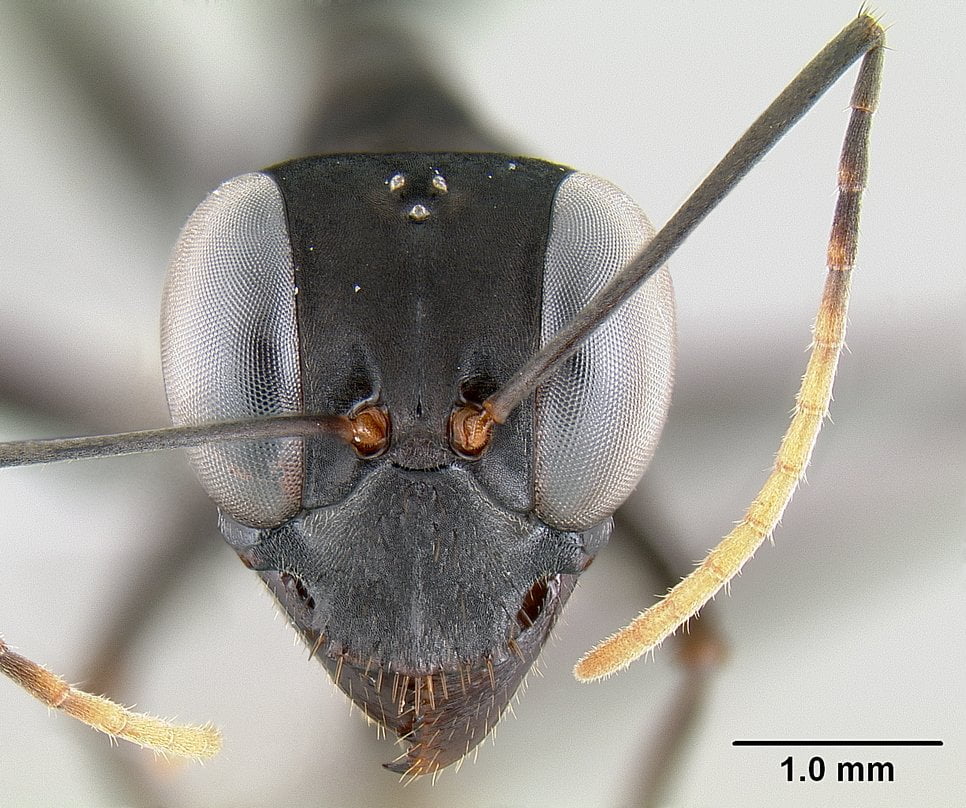Ants possess the ability to see, but their vision varies among species. Some ants have excellent eyesight, while others may be nearly blind.
Ants are remarkable creatures that form complex colonies and ecosystems. Their ability to see plays a crucial role in navigating and communicating within their environment. Ant vision is adapted to their specific needs, which can include detecting movement, guiding them to food, or helping them avoid predators.
Different ant species have evolved different levels of visual acuity, depending on their habitat and lifestyle. For instance, ant species that rely on foraging during the day typically have better-developed eyesight than those that are nocturnal or live primarily underground. Given the variation in their visual capabilities, ants are a testament to the diverse ways in which living organisms can interact with their surroundings. Understanding the intricacies of ant vision not only fascinates enthusiasts but also provides insights into entomology and even the development of robotic vision systems inspired by nature.
The Visual Perception Of Ants
The Visual Perception of Ants is both fascinating and complex. People often wonder if these minute creatures can see the world around them. Understanding the intricacies of ant vision opens a window into how they navigate and survive in their environments.
Ant Eye Anatomy
Let’s delve into the structure of ant eyes. Ants possess a unique set of visual faculties that enable them to detect movement, light intensity, and even the ultraviolet spectrum. Their eyes are called compound eyes, which consist of many small lenses called ommatidia. Each ommatidium collects a fragment of the visual field, which collectively forms a mosaic image. This allows ants to detect predators and navigate effectively.
Some ants have simple eyes or ocelli. These are single-lens eyes that sense light but don’t form clear images. Ocelli aid ants in detecting changes in light, which is essential for their diurnal activity patterns.
Types Of Eyes In Ant Species
Not all ants are created equal in terms of vision. Different ant species have varying types of eyes adapted to their specific lifestyles.
- Worker ants may have reduced or absent eyes since they spend much of their time in the dark.
- Queen ants typically have well-developed eyes, as they have to fly during their nuptial flight and need good vision to navigate.
- Males, often called drones, also have large compound eyes which help them locate queens during flight.
Ant species that are active foragers, especially those hunting or scavenging during the day, often have more sophisticated vision with more ommatidia.
Comparing Ant Vision To Human Eyesight
Ants and humans see the world very differently. Have you ever wondered how an ant views its surroundings? Let’s dive into the fascinating world of ant vision and see how it stacks up against our human eyesight.
Visual Acuity
Visual acuity refers to the clarity or sharpness of vision. In humans, visual acuity is central to our sight. We can see fine details and subtle colors. Ants, however, have a much simpler eye structure.
- Human eyes: can resolve fine details and recognize patterns easily.
- Ant eyes: have lower resolution, making their visual acuity quite poor compared to ours.
This means that while we can read tiny text or see a friend’s face from afar, ants might struggle with these tasks.
Field Of View
The field of view is the extent of the environment that can be seen at any one time. Ants actually have an advantage here, thanks to their compound eyes.
| Species | Field of View |
|---|---|
| Humans | About 180 degrees with both eyes |
| Ants | Up to 360 degrees, allowing them to see all around |
We have a wide view, but ants can see more of the world at once. This helps ants be aware of predators and find food better.
How Ants Navigate Their Environment
How Ants Navigate Their Environment is a fascinating subject for anyone intrigued by the natural world. Ants, despite their small size, exhibit remarkable navigation skills, moving with purpose and coordination that is intriguing to observe. This post delves into the intriguing methods ants use to find their way around.
Use Of Visual Cues
Ants are equipped with eyes that allow them to perceive visual cues from their surroundings. The level of detail they see varies among species, but most can discern light, movement, and form, which aids in navigation.
- Light: Ants detect light to determine direction.
- Movement: Observing moving objects helps them avoid danger.
- Form: Recognizing shapes enables them to identify landmarks.
The Role Of Pheromones
Pheromones play a crucial role in ant communication and navigation. These chemical markers are the ants’ GPS, guiding them to food sources and back to their colony.
| Pheromone Type | Function |
|---|---|
| Trail Pheromones | Mark paths to resources |
| Alarm Pheromones | Signal danger to others |
| Home Pheromones | Guide ants to their nest |
Light And Ant Vision
Do ants have eyes? Many do, and they can see! Light plays a key role in how ants perceive the world. Let’s dive into the fascinating details of how ants use light to navigate their environment.
Sensitivity To Different Wavelengths
Ant eyes are unique. They see the world differently than we do. Ants are sensitive to ultraviolet (UV) light most humans cannot see. This UV vision helps them follow the sunlight and find food. Some ants even use UV light to communicate!
Nocturnal Versus Diurnal Ants
Ants can be night lovers or day seekers. Nocturnal ants roam when the moon is out. They have special eyes that help them see in the dark. Diurnal ants come out with the sun. Their eyes are good at handling bright daylight. Both types are adapted to their lifestyles with different vision capabilities.
Communication And Visual Signals
Ants are amazing creatures with various ways to communicate. They use body movements, chemical trails, and even their antennas. People often ask if ants can see. Yes, they can! Ants have eyes and can notice changes in light. But they rely more on other signals to chat with friends. Let’s find out how they use body language and sight.
Body Language Among Ants
Body language is key for ant talk. These tiny insects send messages by dancing. They wiggle and shake to tell others where food is. They also touch each other’s antennae as a friendly “hello.” Their body movements can show if they are happy or if there is danger nearby.
- Ants bend their body to show respect to the queen.
- They tap their feet fast to warn others of trouble.
- When they find food, they do a special dance to lead friends to it.
Interpreting Visual Cues
Ants also use their eyes to understand the world. They see patterns and shapes that tell them where they are. Their eyes are not like ours but they work well for ant needs. During the day, light helps them know which way to go. At night, they use the stars to find their way home.
| Visual Signal | Meaning |
|---|---|
| Bright Light | Daytime or danger |
| Dark | Nighttime or safe hiding spot |
| Moving Shadows | Possible threat or change in environment |
Different ant species might see things uniquely. Some have better sight. Others depend more on their sense of smell. But together, body language and eyesight help ants live and work as a team. They don’t need words when they have such smart ways to say “I found food” or “Come this way!”
Credit: www.quora.com
Limitations Of Ant Eyesight
Ants excel in teamwork and strength, but their eyesight has limitations. Despite their amazing navigation skills, ants face challenges when it comes to what they can see. This part of the blog post delves into the restrictions of their visual capacity.
Distance Limitations
Ants generally have poor visual acuity when it comes to distances.
- Most can’t see objects that are far away.
- Ants rely more on touch and chemical signals to perceive their environment.
- Their compound eyes are better suited to detect movement over long distances rather than detailed images.
Blindness In Some Species
Certain ant species are completely blind.
- These species depend entirely on their antennae and pheromones for navigation and communication.
- Blind ants, like some in the army ant genus, live mostly underground or in dark environments where eyesight is unnecessary.
Ants And Color Perception
Ever wonder if the ants marching one by one can actually see the world in color? Ants are amazing creatures, known for their strength and social skills. Yet, their vision is a subject of fascination for many. In this exploration, we dive into how ants perceive their surroundings, specifically focusing on their color vision capabilities.
Do Ants See Color?
Ants do see, but not as humans do. Their eyes are less complex. Ants have compound eyes, which give them the ability to detect movement very well. Compound eyes are made up of many tiny lenses, each pointing in a different direction.
Regarding color, ants’ vision is quite different. Though they don’t see the full spectrum, studies show that ants can see ultraviolet (UV) light. Some species may perceive colors such as blue and green. This suggests that ants are not entirely blind to colors.
The Function Of Color Vision
Color vision in ants is not just about observing beauty. It serves a crucial purpose. Color helps ants find food and navigate their environment. It aids in distinguishing between harmful and nourishing plants.
- Locating Resources: Color clues lead ants to food or back to their colony.
- Communication: Ants communicate through chemical signals, but color can also play a role.
- Survival: Spotting predators or prey is easier with some color perception.
While not as vivid as human color vision, ants’ perception allows them to thrive in diverse habitats.
| Aspect | Ants | Humans |
|---|---|---|
| Color Spectrum | Limited, UV perception | Wide, RGB perception |
| Detail | More movement-based | High-resolution |
| Purpose | Survival tasks | Varied, complex processing |
Though different from ours, ants utilize their unique vision proficiently, navigating the world in remarkable ways.

Credit: www.dailybulletin.com.au
Scientific Studies On Ant Vision
Is it true that ants can see? They may seem tiny to us, but ants live complex lives. Scientists have been curious about ant vision. Studies explore how these insects view the world. Let’s dive into the intriguing world of ant vision, unraveling recent findings and experimental methods.
Experimental Methods
Exploring ant vision calls for unique tests. Scientists use ingenious techniques to learn how ants see. Labs test how ants navigate and recognize patterns. Do ants prefer light or dark? Special mazes answer this.
- Behavioral Observations: Watching how ants react to visual stimuli.
- Maze Trials: Testing navigation in different lighting conditions.
- Pattern Recognition: Using shapes and colors to assess vision capabilities.
Research helps us understand sensory experiences of ants. Technologies like high-speed cameras capture ants’ rapid movements.
Recent Discoveries
Recent insights have shed light on ant vision. Compound eyes of ants are remarkable. They give ants a different view than our eyes do. Studies show many species can detect movement efficiently. Others can see in color.
| Species | Vision Capability |
|---|---|
| Fire Ants | Poor sight, sense movement |
| Leafcutter Ants | Fair color vision, decent detail perception |
Some species, like the Saharan silver ant, can navigate by the sun’s position. They live in extreme environments and move fast to avoid heat. Studies confirm, light and shadow play major roles in their survival.

Credit: lizzieharper.co.uk
Frequently Asked Questions Of Ant Can See Or Not
Can Ants Actually See?
Ants possess compound eyes that allow them to detect movement and light intensity. However, their vision is not sharp or detailed like humans. Many ant species rely more on their antennae and chemical signals for navigation and communication.
How Do Ants Use Their Vision?
Ants primarily use their vision for detecting movement and navigating their environment. Their compound eyes are adept at sensing quick changes. However, for detailed tasks and communication, they depend on their chemical senses.
What Is The Range Of An Ant’s Vision?
An ant’s vision range is limited and not precise when compared to human eyesight. They can detect light and movement, but their ability to discern fine details is restricted. Ants rely more on tactile and chemical cues.
Do All Ants Have The Same Vision Capabilities?
No, vision capabilities can vary between different ant species. Some may have better visual acuity, but generally, ants have relatively poor eyesight and depend on other senses. Species that live in darkness, like underground, might have reduced or non-functional eyes.
Conclusion
In wrapping up, ants possess a remarkable vision suited for their needs. While not as sharp as humans, it enables them to navigate and survive effectively. Remember, these tiny creatures boast complex eyesight that underpins their intricate societies. Embrace the wonder of ants and their unique perspective on the world.

I’m MD Tanvir, and I bring years of expertise gained from working closely with pest control companies to the forefront. My journey in the industry has inspired me to launch Bug Battler, a platform aimed at equipping people with the know-how to combat pests autonomously. Through Bug Battler, I aim to empower individuals with practical insights to tackle pest infestations effectively.

